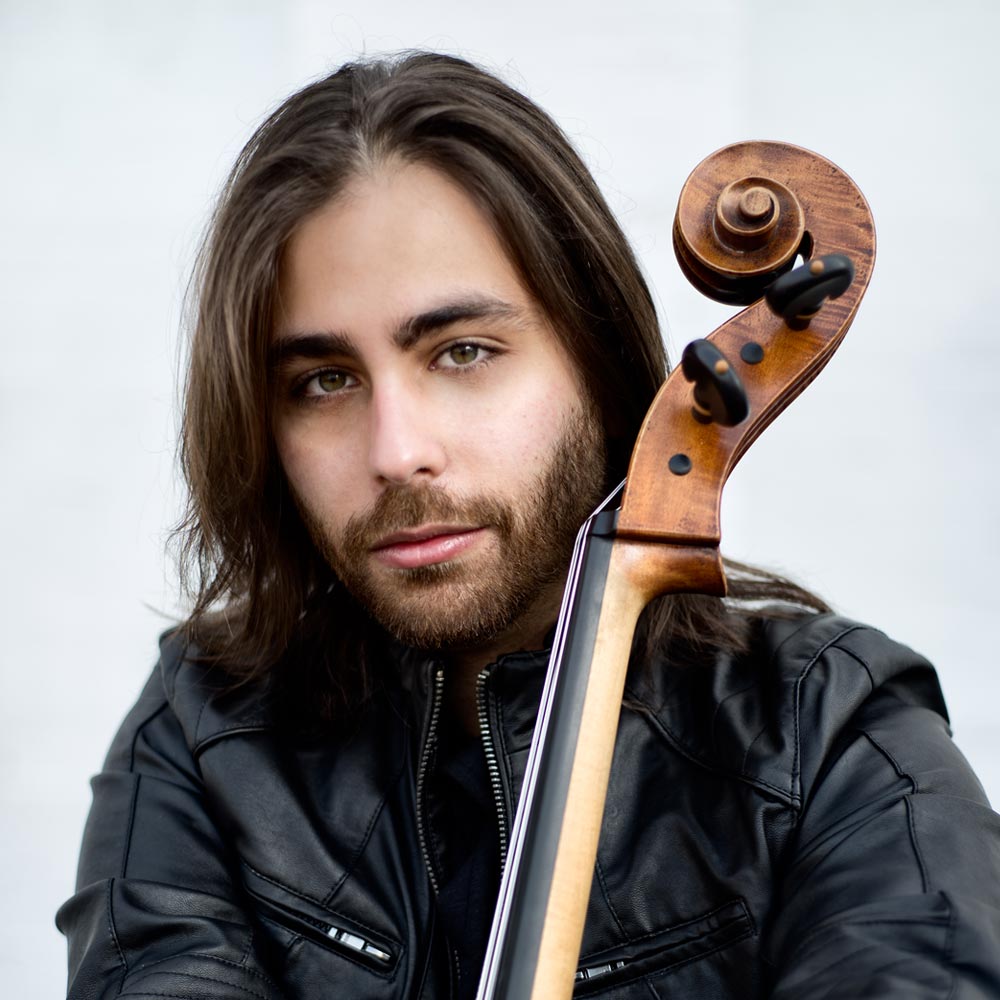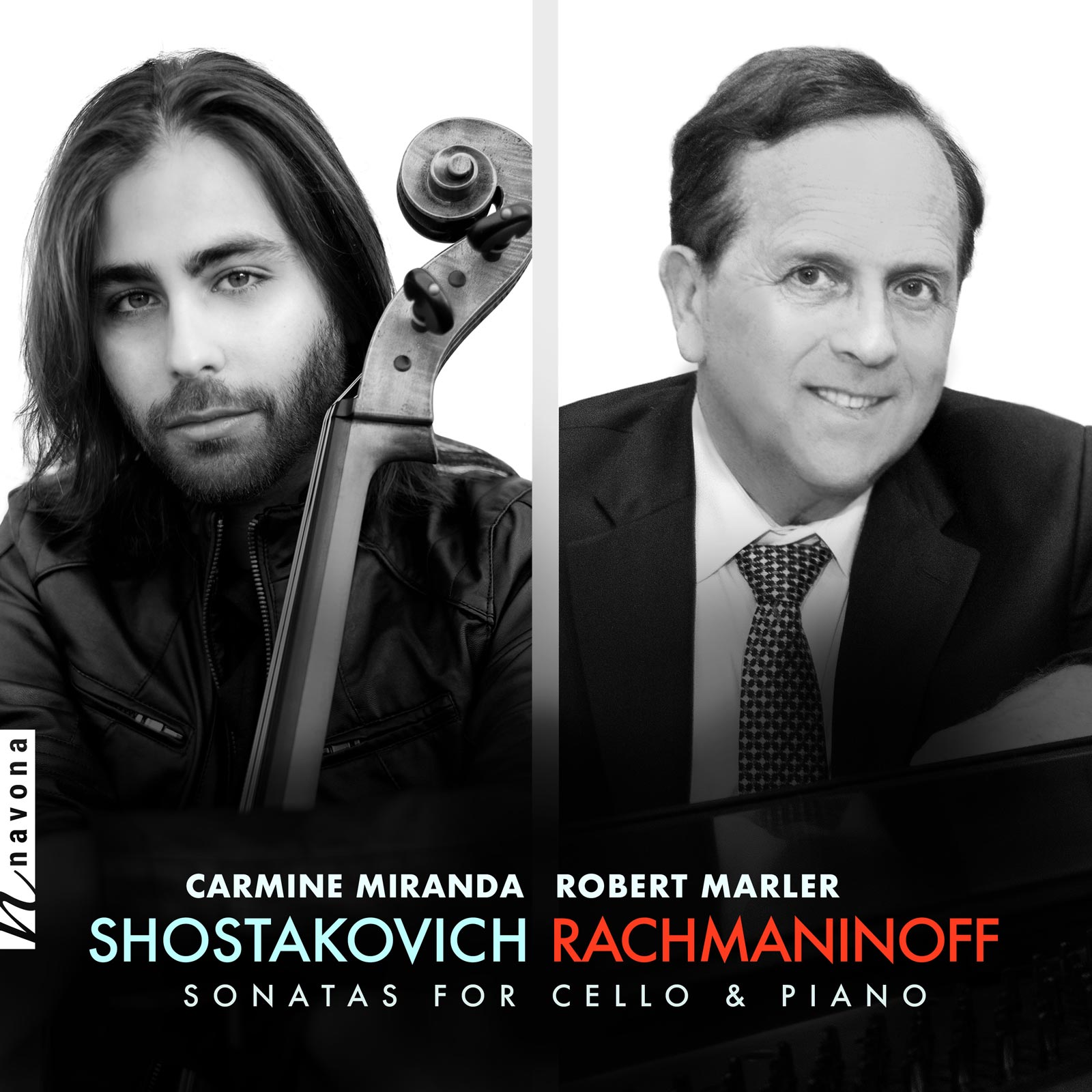
Acclaimed award-winning cellist Carmine Miranda and GRAMMY-nominated Nashville Symphony pianist Robert Marler combine their virtuosity with the legendary three-time GRAMMY-nominated producer Alan Shacklock and celebrated mastering engineer Tommy Dorsey on SHOSTAKOVICH / RACHMANINOFF: SONATAS FOR CELLO AND PIANO to deliver the highest quality performances of renowned works. Once turning points in the lives of Shostakovich and Rachmaninoff, these works have stood the test of time, rewarded with commanding performances by the aforementioned cellist and pianist.
Today, Carmine (CM) and Robert (RM) are our featured artists in “The Inside Story,” a blog series exploring the inner workings and personalities of our composers and performers. Read on to learn about Carmine’s extensive and diverse musical library, and Robert’s passion for Saltwater aquariums…
If you weren’t a musician, what would you be doing?
CM: If I wasn’t a musician, I would be pursuing a career in the culinary arts or aviation. I am actually a pretty decent cook and I have worked as a line cook in several restaurants during my younger years. At the same time, before learning about music, I wanted to become a commercial airline pilot since I have always found planes incredibly fascinating. Now I dread getting on planes with my cello (only cellists will understand).
Take us on a walk through your musical library. What record gets the most plays? Are there any “deep cuts” that you particularly enjoy?
CM: I listen to just about anything besides classical. Particularly EDM, rock and funk. Some of the artists that you will find in my library are Toto, Styx, Queen, Yngwie Malmsteen, Steve Vai, Guns and Roses, The Darkness, Daft Punk, Justice, Avicii, Breakbot, Lizzo, Dolly Parton, Django Reinhardt, Miles Davis and many more. One of the albums that got the most plays since 2019 is Mark Ronson’s Late Night Feelings, I particularly love his collaboration with Yebba. What an amazing singer!
Where and when are you at your most creative?
CM: Definitely at home! I am big about environments, and I always need a space where I can have some peace and quiet. Oftentimes several aspects of my days are very hectic, demanding, and noisy. For this reason, at the end of the day, I need a place where I can not only rest my mind but also allow me to think clearly. This is where usually inspiration happens for me.
What emotions do you hope listeners will experience after hearing your work?
RM: The two pieces feature a wide range of emotions. The Shostakovich sonata was written after a period of emotional turmoil in his life. He had a brief affair with a young student and was briefly separated from his wife. One can feel the anxiety and turbulence throughout the entire sonata. The second and last movements are extremely chaotic and eccentric with sometimes crazy demands of virtuosity from the performers. The Rachmaninov cello sonata is full of subtle color shifts and dance-like melodies with contrasts of deep sadness. It was written after Rachmaninov had been experiencing long bouts of depression and creative writer’s block. The third movement, one of the most beautiful of all his pieces, brings out much of the melancholy he had been experiencing.
How do you prepare for a performance?
RM: Between my job as the Nashville Symphony pianist and Professor of Music at Belmont, I practice early every morning. Most of my practice begins at 6:30 each morning and ends at 8:00 am with my first students of the day. Throughout the day I try to practice whenever I get a few minutes. I try to practice at least 2-3 hours a day or more if the repertory and deadline requires it.
What are your other passions besides music?
RM: I do have a few things to get my mind off learning new music and deadlines. My favorite passion at the moment is Saltwater aquariums. I love the challenge of growing coral and creating a contained reef with a few colorful fish. Of course, all this is secondary to family, my wife, two daughters and three grandchildren.

Award winning cellist Carmine Miranda has established an international career and recognition as a soloist, chamber musician, educator, and is a best-selling recording artist. Praised by many publications such as Fanfare Magazine for “fast becoming known for his ability to combine virtuosity with intense, well-thought-out interpretations” and by The Strad Magazine for “showing himself to be in full command of both instrument and works,” Miranda’s performances and recordings have appeared in some of the finest concert halls, music festivals, radio and TV stations, as well as PBS affiliated stations all over the United States, Europe, Latin America, and Asia.

